Diversity Collection
Analysis
The organisms in a specimen can be analysed by analysis types defined in
the database. In the tree the analysis entries are symbolized with an


To show or hide the analysis items in the tree use the 



 will hide
the entries.
will hide
the entries.
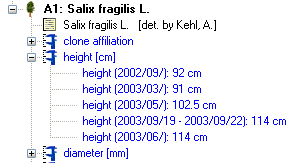
To insert a new analysis to an organism select the organism in the upper tree. Then select the type of the analysis from the drop down list as shown below.
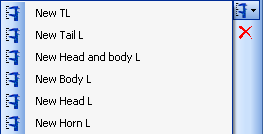
To delete an analysis, select it in the tree and use the 


If an analysis refers to a part of the specimen, you can document this by choosing the respective part from the list (see field Part above). The analysis will then be shown in the tree for the parts of the specimen as well. Alternatively you may directly choose the organism in the part tree and create the analysis for this part of the organism in the part tree. If you used any tools defined in the toolsection, you can include the usage of these tools.

In case the measurement unit of the analysis set to DNA (see below) ...
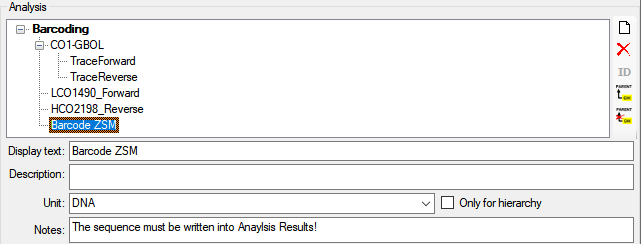
... the Result is edited as shown below.

A click on the 
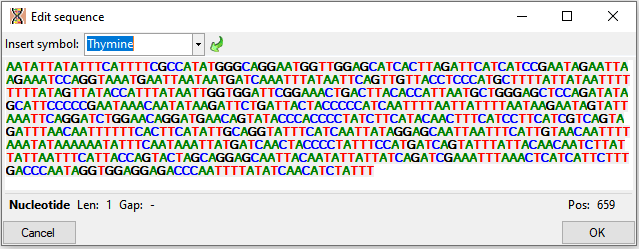
Administration
If you require further information about an analysis click on the 
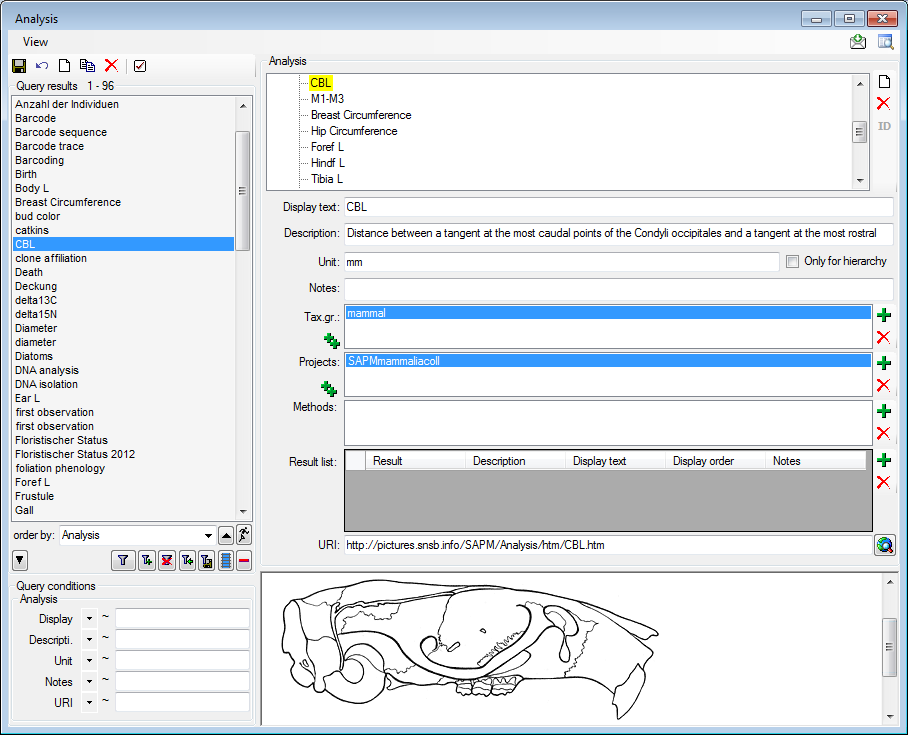
For the import and export of data it is sometimes necessary to know the IDs of the analysis types. To see the IDs, click on the [ ID] button to display them as shown in the image below.
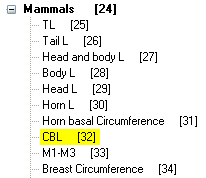
The types of an analysis are restricted by the taxonomic group of
the organism or object to be analysed and from the projects. You may
edit the list of taxonomic groups resp. projects, which
can use a certain analysis, using the 

 buttons. For details
about handling data see the data section. If you add a
taxonomic group or a project to an analysis, all children of this
analysis will be available for these taxonomic groups resp. projects as
well (see image below). Thus, in the example above it is sufficient to
enter the taxonomic group and the project in the analysis Mammals to
have access to all analysis within this superior analysis as shown in
the tree. The different types of analysis are organized in a hierarchy.
To organize. Some of the entries may only serve for structuring purposes
(e.g. Mammals as shown above) and should not be used to document the
analysis of the specimen. To ensure this, check the checkbox [Only
hierarchy].
buttons. For details
about handling data see the data section. If you add a
taxonomic group or a project to an analysis, all children of this
analysis will be available for these taxonomic groups resp. projects as
well (see image below). Thus, in the example above it is sufficient to
enter the taxonomic group and the project in the analysis Mammals to
have access to all analysis within this superior analysis as shown in
the tree. The different types of analysis are organized in a hierarchy.
To organize. Some of the entries may only serve for structuring purposes
(e.g. Mammals as shown above) and should not be used to document the
analysis of the specimen. To ensure this, check the checkbox [Only
hierarchy].
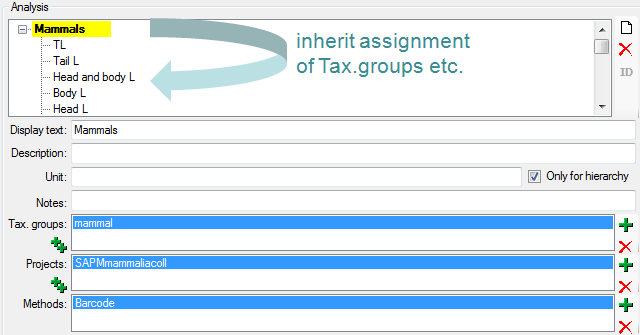
There are 3 states for result lists in the main form. (1) No result list
will be generated if a measurement unit is defined, for example if you
specify "mm" as the measurement unit. (2) If no measurement unit is
defined, the program will collect all values given so far and present
these values as a list. (3) Some types of analysis need categorized
values. Enter these values together with their description in the
Result list as shown below using the 

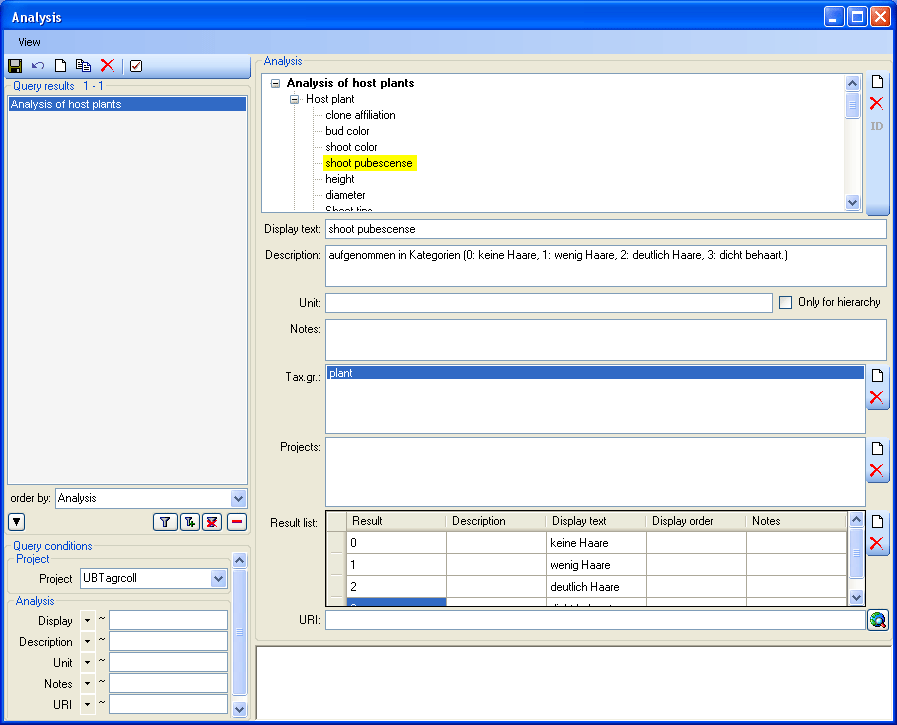
If you want to access or inspect an URI given for an analysis type,
click on the 
Methods
Besides of a plain text description of the analysis, you may insert
methods as defined in the chapter Methods. Use the 

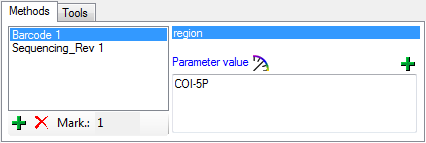
Every method may have several parameters 

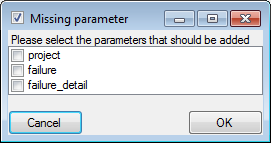
History
To view the history of a dataset, click on the
